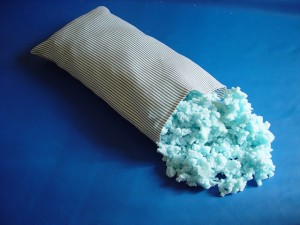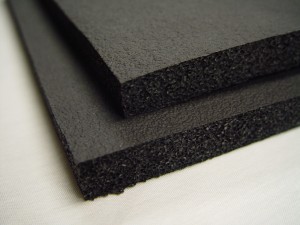As you prepare to purchase your next comfort product or start a new DIY project, there’s a good chance you’ll have to decide what type of foam you will want to use. To the average person, there isn’t much difference between conventional foam materials. After all, three foam cubes can be placed side-by-side with the same dimensions, appearance, feel, and firmness. But even with those similarities, these blocks can each have three distinctly different levels of quality.

Foam suppliers and manufacturers have enough control over the creation of foam materials to make numerous grades of similar materials. While this may sound sneaky or sinister, the foam fabrication of different grades and qualities is actually something that’s quite beneficial to consumers, whether they’re looking for a new queen-size foam bed, firm foam for cushions, or packaging foam. And once you understand why there are different qualities of foam, how to identify which is which, and the best uses for each kind, you will get products with performance and prices that match your expectations.
First, it’s important to realize why foam is not a one-size-fits-all material. The ability to produce materials that facilitate the existence of product tiers is something that directly benefits consumers. With the range of applications foam products can be applied to, it makes sense that some uses will require a longer list of demands than others. A foam mattress that you sleep on for eight hours a night obviously needs to be a higher quality product than packaging used only once. Conversely, spending mattress-quality money for storage-quality uses is impractical. With foam having different levels of quality, customers can buy a grade that fits their needs and nothing more, nothing less.
That leads us to the next question, which is how to tell what makes a foam “high quality.” As mentioned in the opening paragraph, those three pieces of brand-new foam that look and feel identical could easily exhibit three very different levels of quality over time. Fortunately, there is a way to gauge foam’s quality, and it is done with a density value. In simplest terms, foam’s density is the weight of a 1 foot cubic block sample of the respective material. For example, Foam Factory, Inc.’s Lux-HQ foam has a 2.8 pound density, meaning its test sample weighs 2.8 pounds. And the greater a foam’s weight and density, the more quality it possesses.
Foam is essentially made of two things; the physical performance product you see and feel, and the pockets of air within the material. Greater weight and density means there is more foam performance product versus open airspace within the product. By possessing more performance material, a foam is stronger and will take longer to break down, making for a greater-quality product.
Knowing why foam is made at different grades and how to identify them leads us to our last question; what is each grade best used for? For a basic explanation, we’ve broken foam quality into four tiers: Fair, Good, Better, and High Quality. The figures used are not official values, but for explanatory purposes, they work just fine.
Fair quality foam is in the .8 to 1.1 pound density range. These are the lowest quality materials, but they also carry cheap foam pricing. They are best used as occasional-use products, as constant use breaks down fair-quality foam because it’s simply not made to hold up. Materials in this range are best used for storage purposes, like foam sheets for protecting holiday ornaments, delicate china, and other infrequently used, but fragile items. It’s also great for crafting projects like stamping or painting. These can even be used as a foam mattress topper to soften guest beds that only get used a handful of nights every year.

1.2 to 1.5 pound density and 1.6 to 2.2 pound density form the middle tiers with Good and Better quality, respectively. These products have the widest variety of uses, from packaging, shipping, and storage uses at the lower end of the spectrum, to many comfort and support uses at the higher end. These can offer appropriate shock and impact absorption for shipping and transporting delicate items. They are also used for pillows and body bolsters to create quality products that are affordably priced.
2.3 to 3 pound density foams are the high quality materials people invest in when they have a heavy-duty application that needs to hold up for years. These products take longer to break down and can support more weight and reduce impact better than any lower quality materials. For that reason, foam in this high density foam range is most often used in couch cushions and quality mattresses, due to the frequency of their use and the physical demands placed on the materials. And while the top-quality materials carry the highest price tags, it is for the durability and longevity you can’t get in lesser products.
With an understanding of the why, how, and what in regard to foam grades, it is much easier to make purchase decisions based on what you know you need, rather than what a sales person is saying. Instead of paying more for a product that’s overkill, or, even worse, paying top-quality prices for medium or low-quality products, you can get the performance you need at a price that fits your budget.

